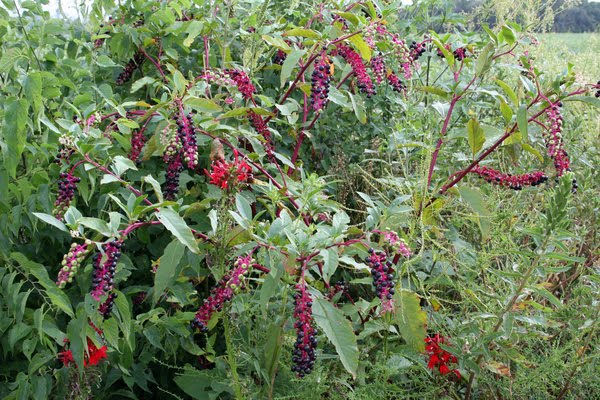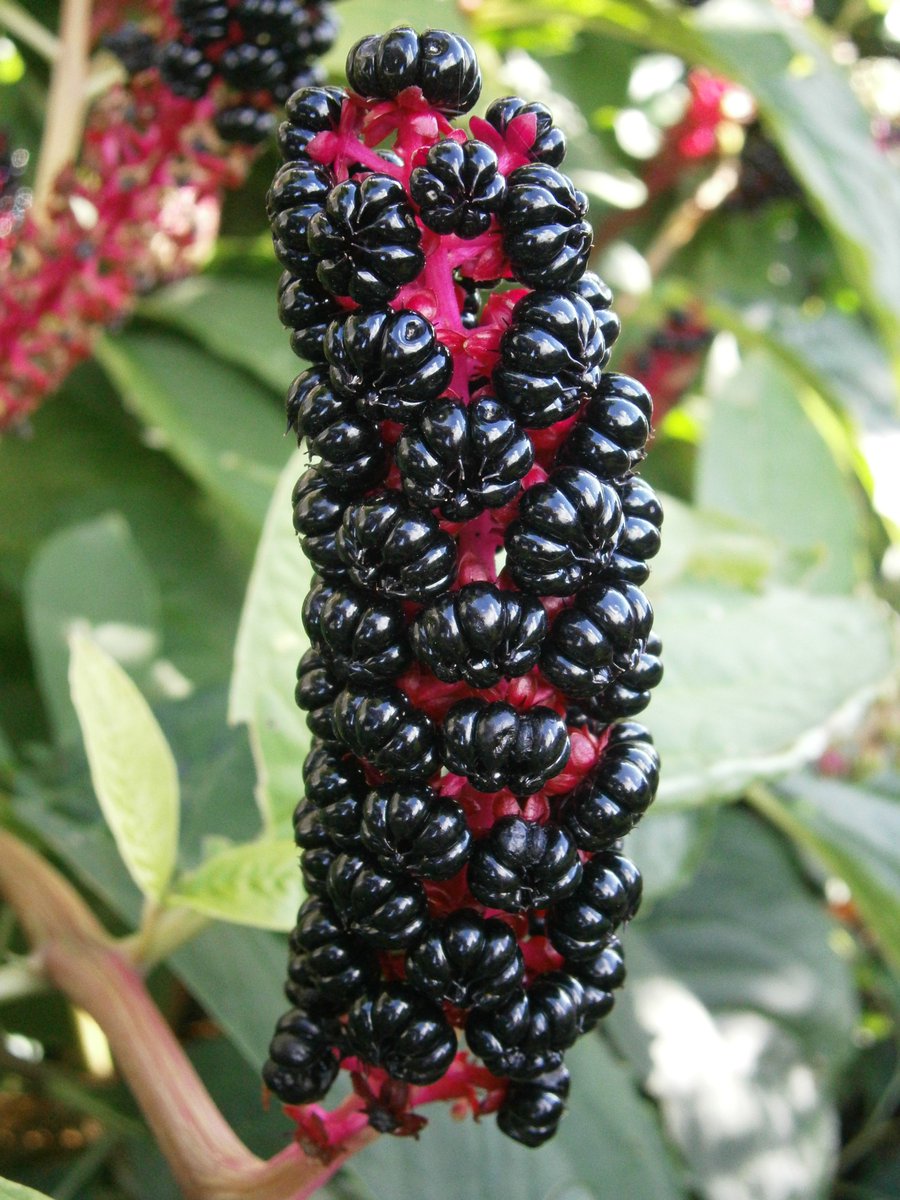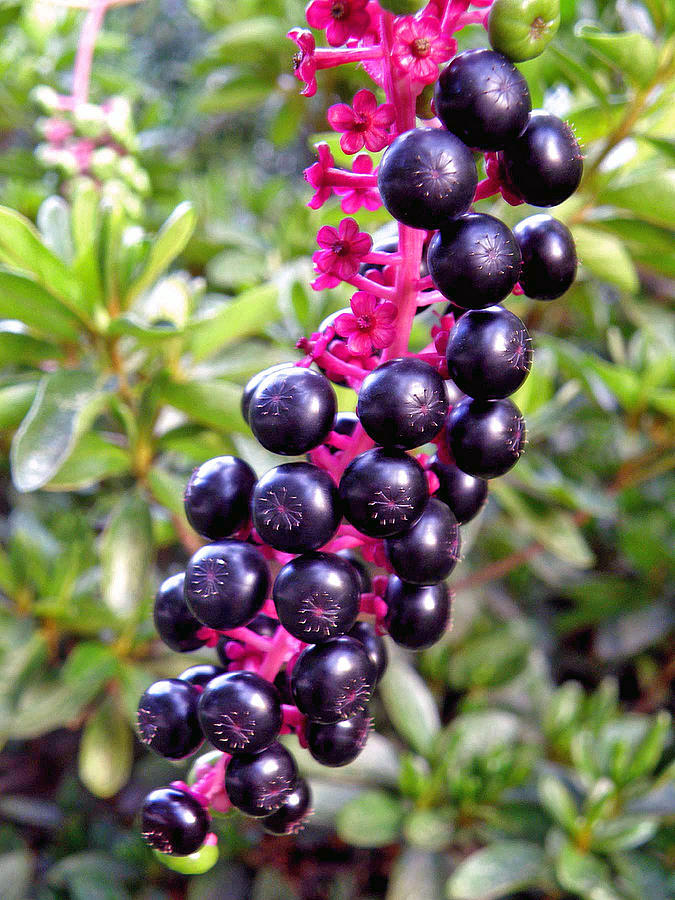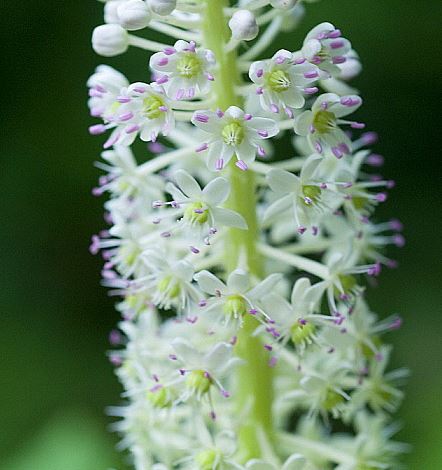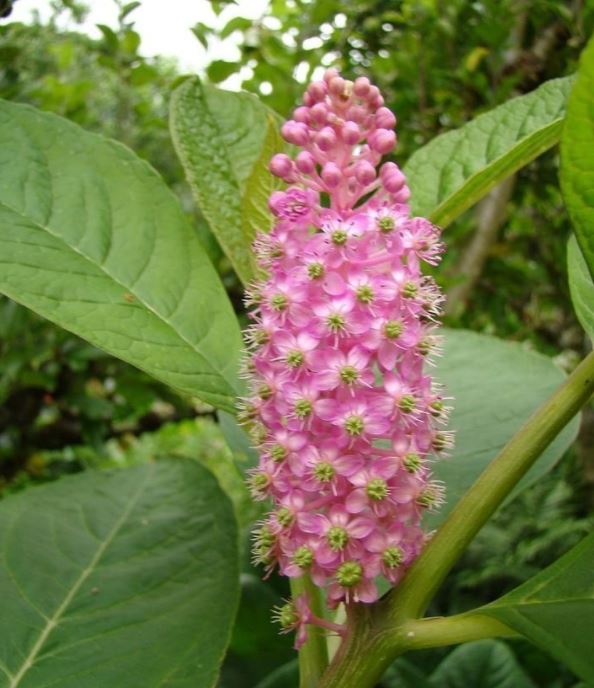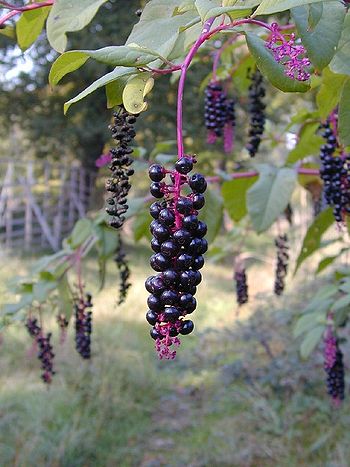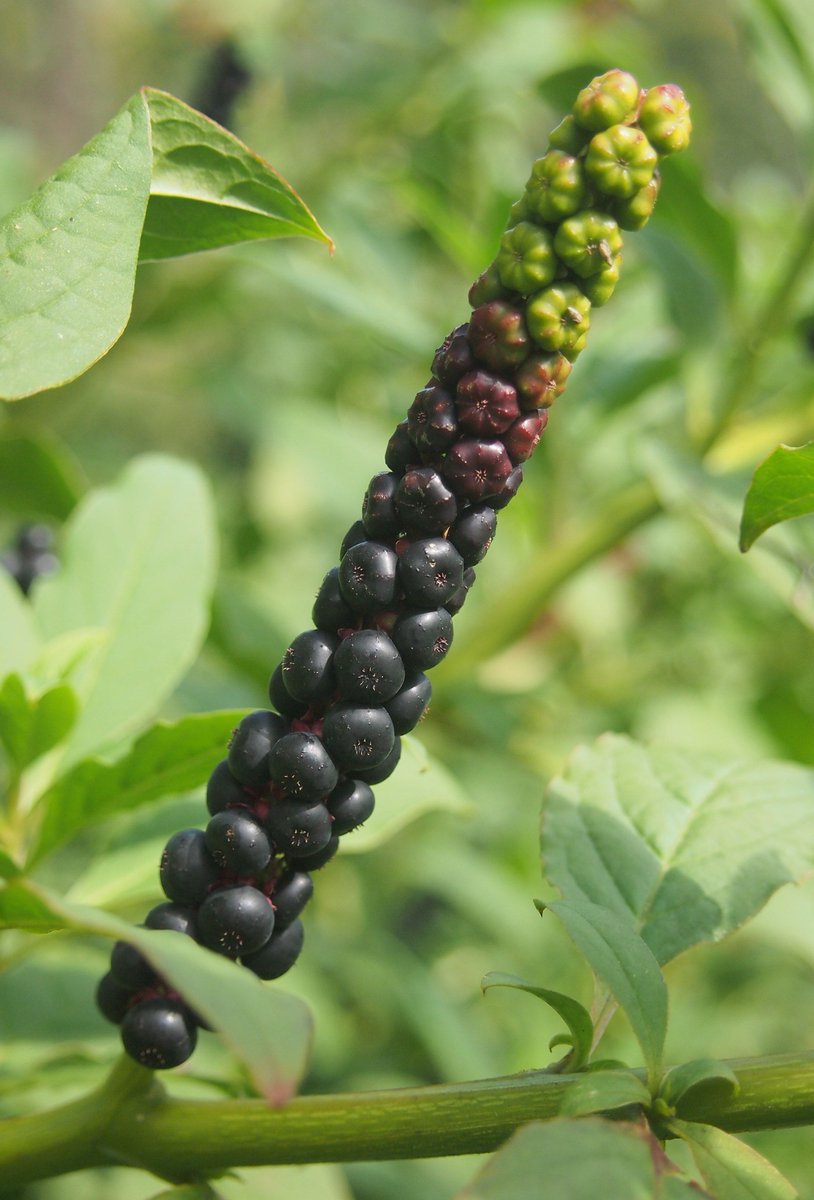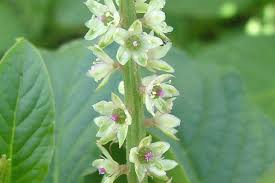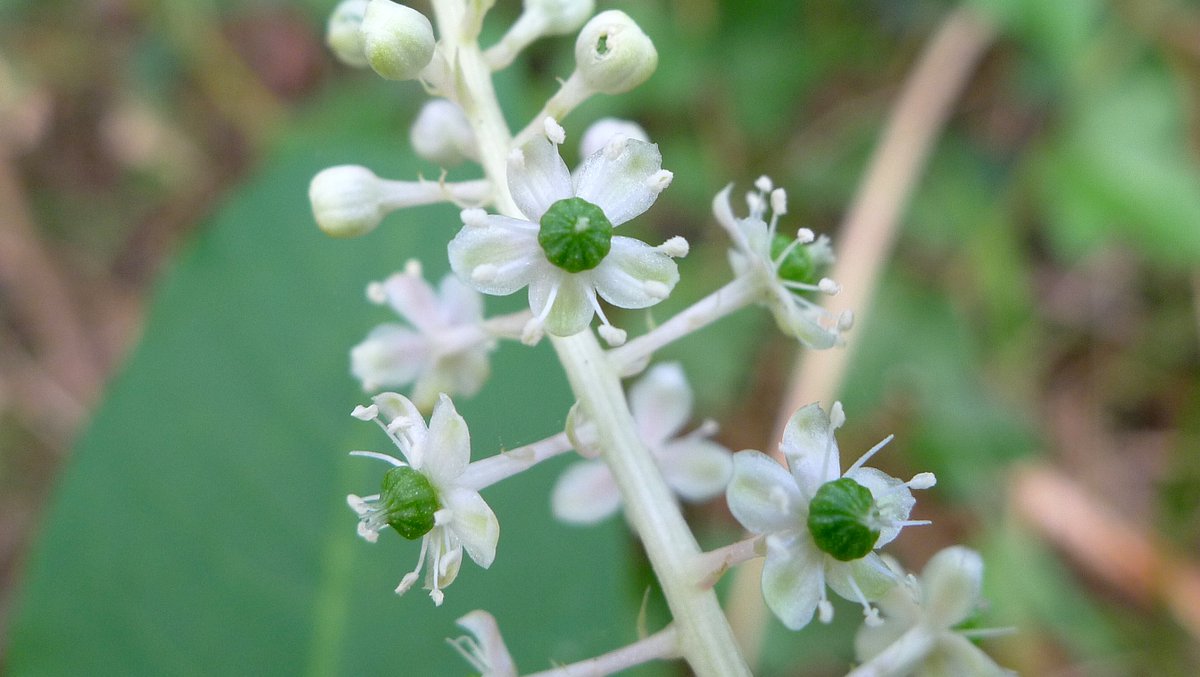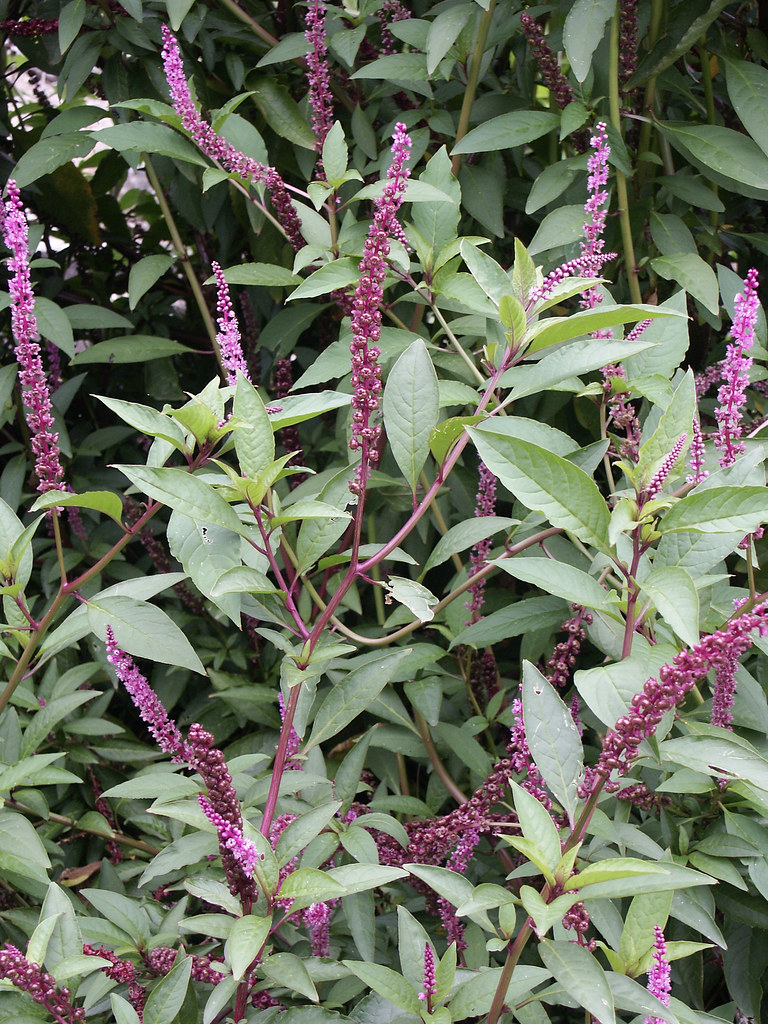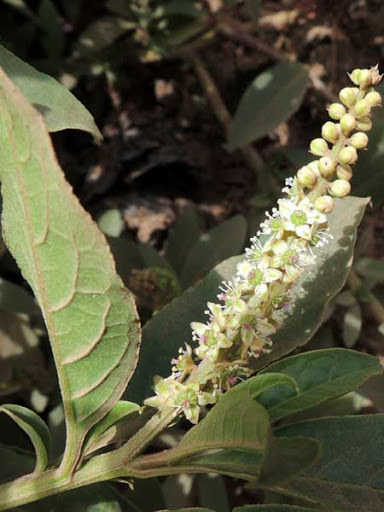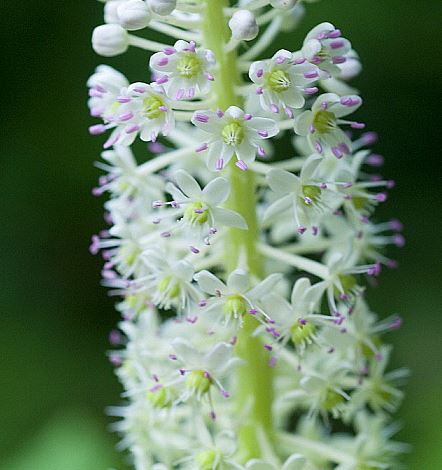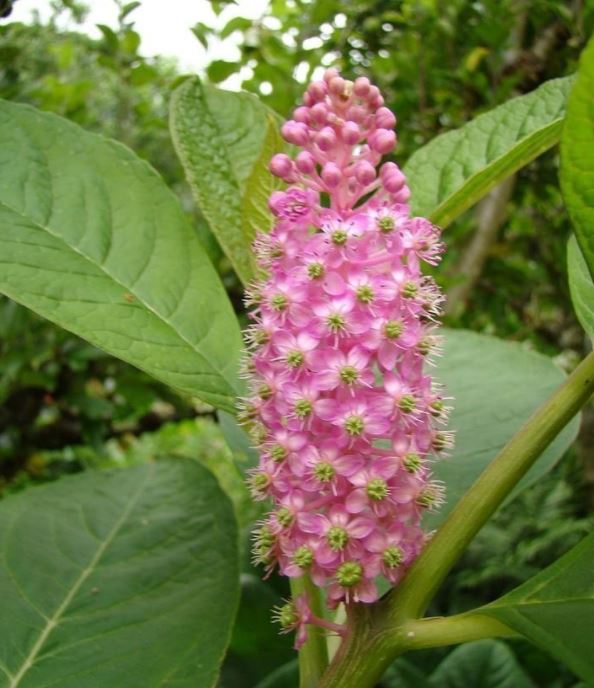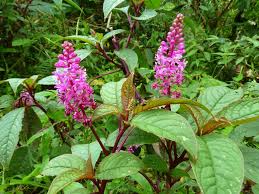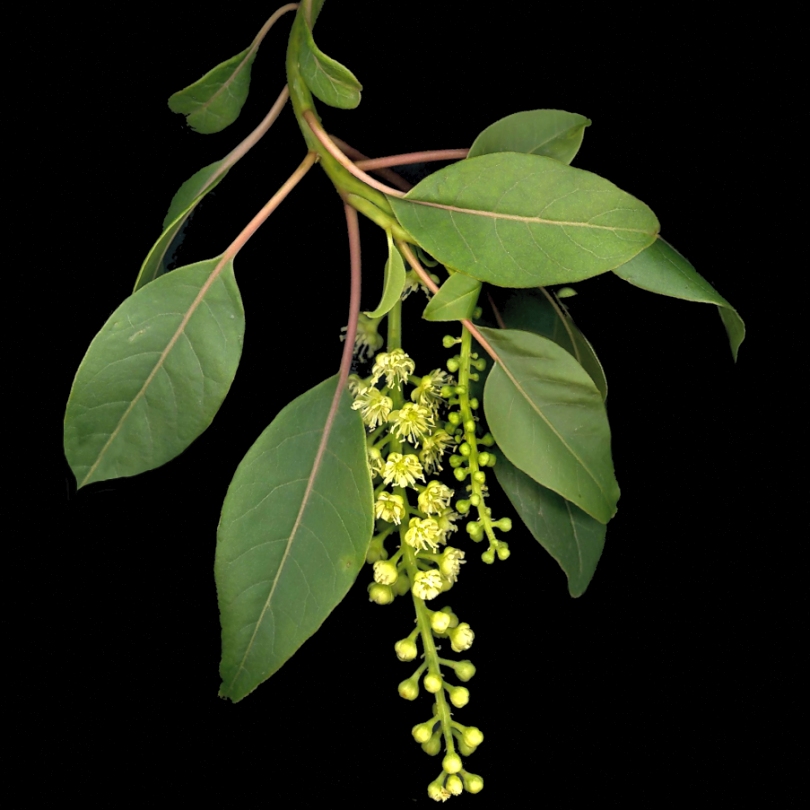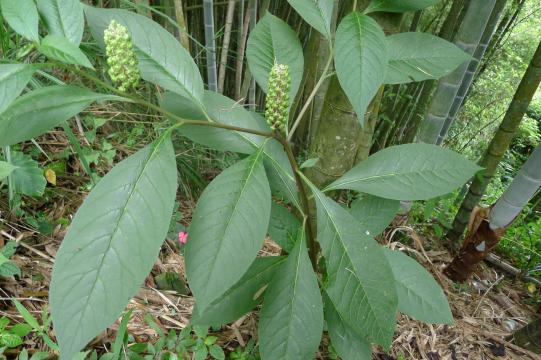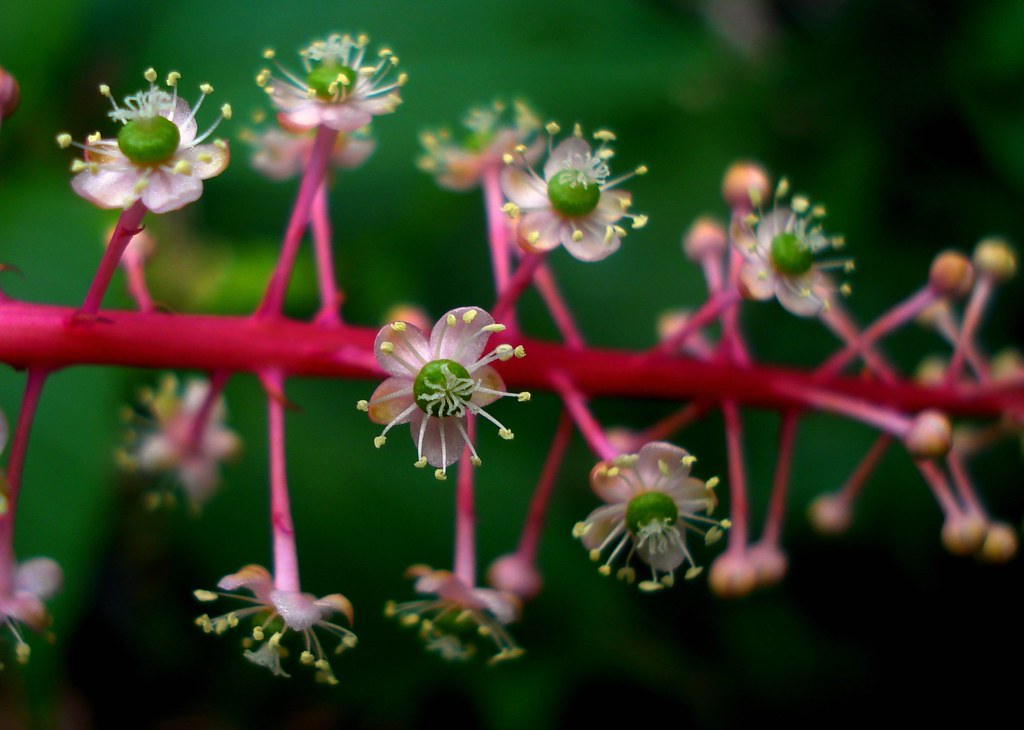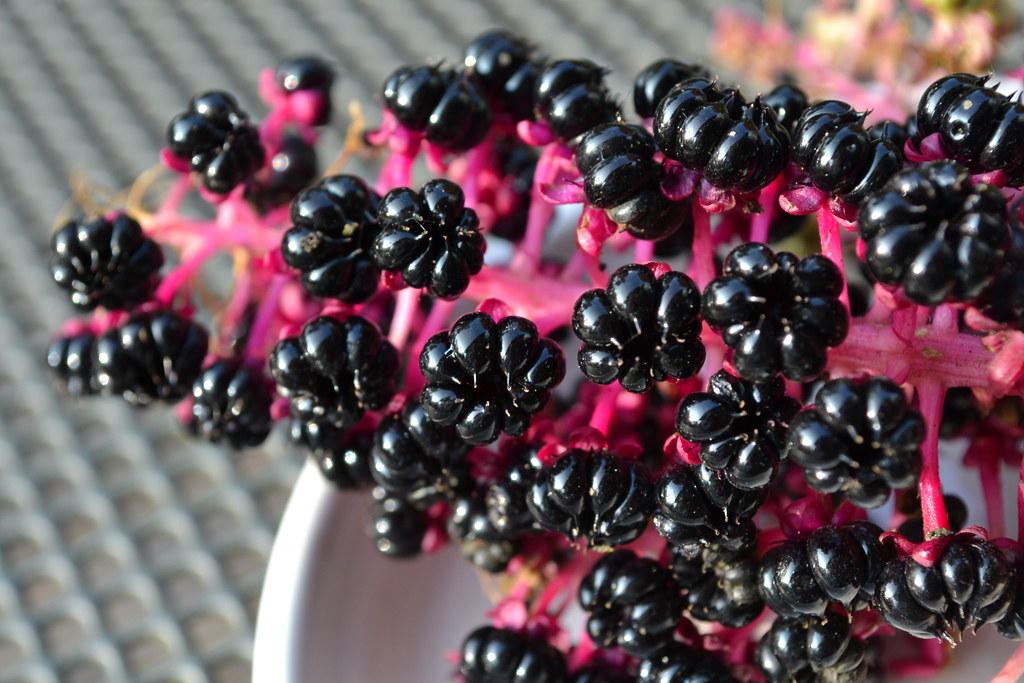Don’t get me wrong. Clapham Tutin & Warburg was a terrific Flora for its time. The problem lies in their superficial treatment of alien species. Because they only included one species of Pokeweed, a generation of botanists grew up thinking they were seeing Phytolacca americana.
What they were seeing, in fact, was much more likely to be Phytolacca acinosa. The genus is notoriously difficult but if you have ripe fruits, P. acinosa is easy. Its fruits are multiple, like a raspberry or a bramble (left) not a smooth, single berry like a blackcurrant (right)
The real issues for recording Phytolacca species accurately arise because you really do need fresh flowers and ripe fruits simultaneously. In the flowers, you must distinguish between the stamens being in a single whorl (left) or appearing to be in 2 whorls (right).
In fruit, we have already seen the multiple vs. berry distinction (above), but the position of the raceme in fruit is also important: drooping (left) or erect (right).
This is how the key to Phytolacca goes in the Flora of North America. First, P. acinosa is identified on the basis of its multiple fruits (above). Next, the smooth berries are separated. First on the basis of their inflorescences: are they spike-like (left) or racemes (right) ?
The two species with short (or no) pedicels (spike-like ones) are separated on their stamens and inflorescence length. Phytolacca icosandra (left) has anthers in 2 whorls and infl. longer than subtending lvs. P. octandra (right) has 1 whorl of anthers and shorter (or equal) infl.
Of the 3 species with longer pedicels (2-13mm), only one has been recorded from the British Isles: the one identified in CTW, Phytolacca americana (left). Stace also includes P. polyandra from China (right), told by its upright fruiting racemes and stamens in 2 whorls.
That’s not the end of the story, because specialist nurseries like Crug Farm Plants in Wales list a further 6 species for sale: Phytolacca bogotensis (TL), P. dioica (TR), P. esculenta, P. japonica (BL), P. rivinoides (BR) and P. rugosa any of which might escape in due course.
But rest assured, if you find a Pokweed that's not growing in a garden, it is almost certainly going to be Phytolacca acinosa. If it is in fruit, you can easily confirm this by its bramble-like, multiple fruits.

 Read on Twitter
Read on Twitter